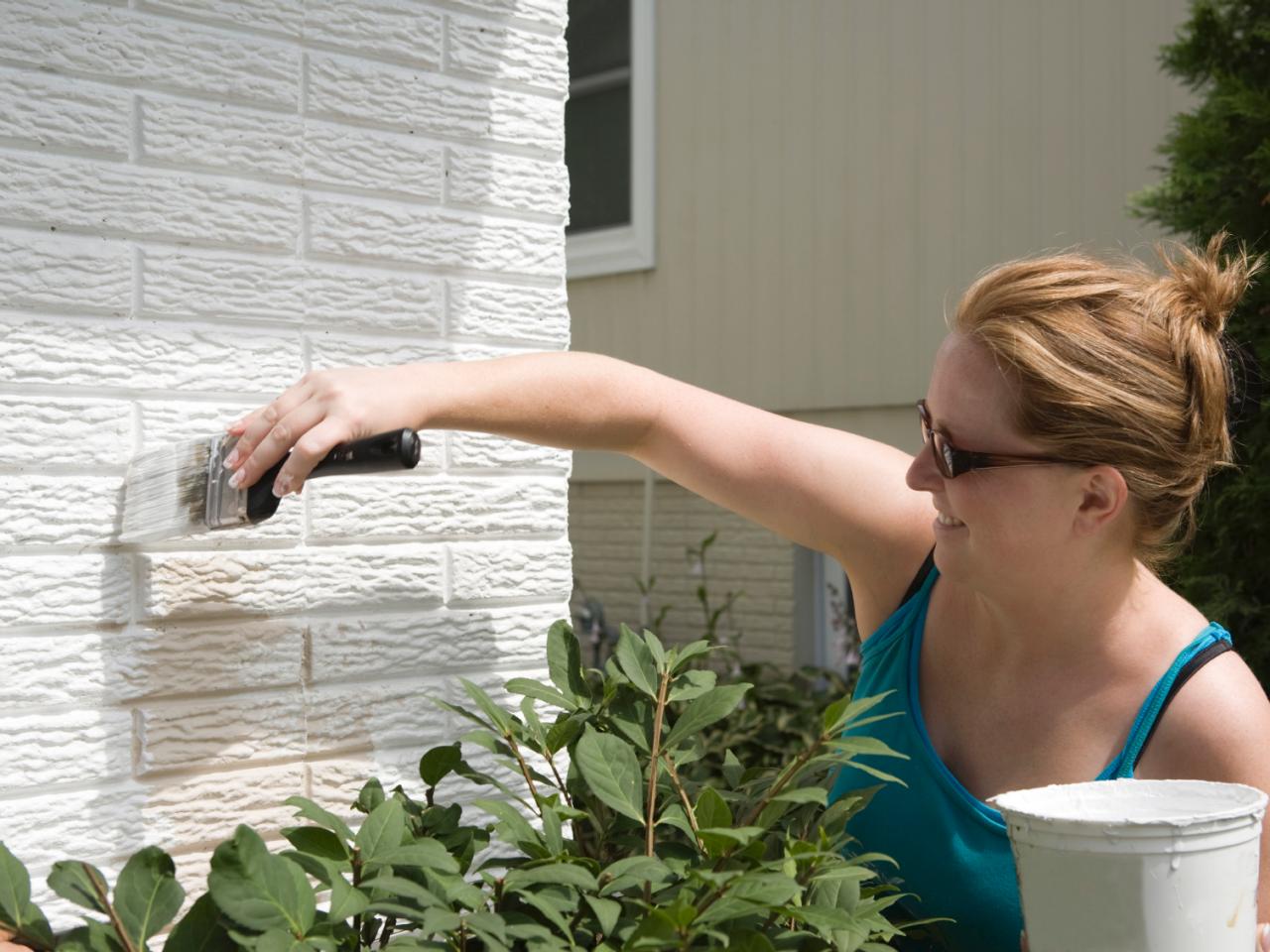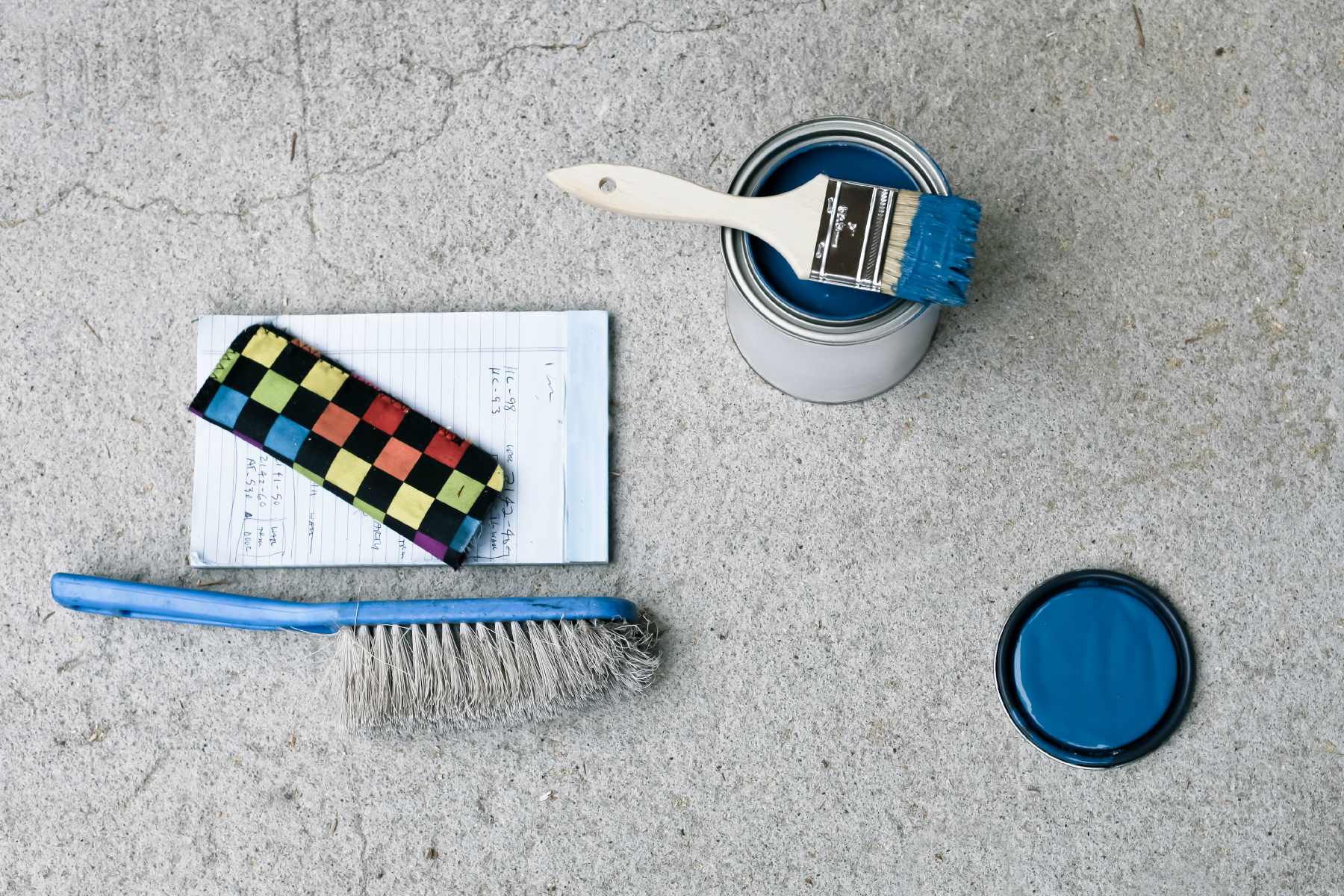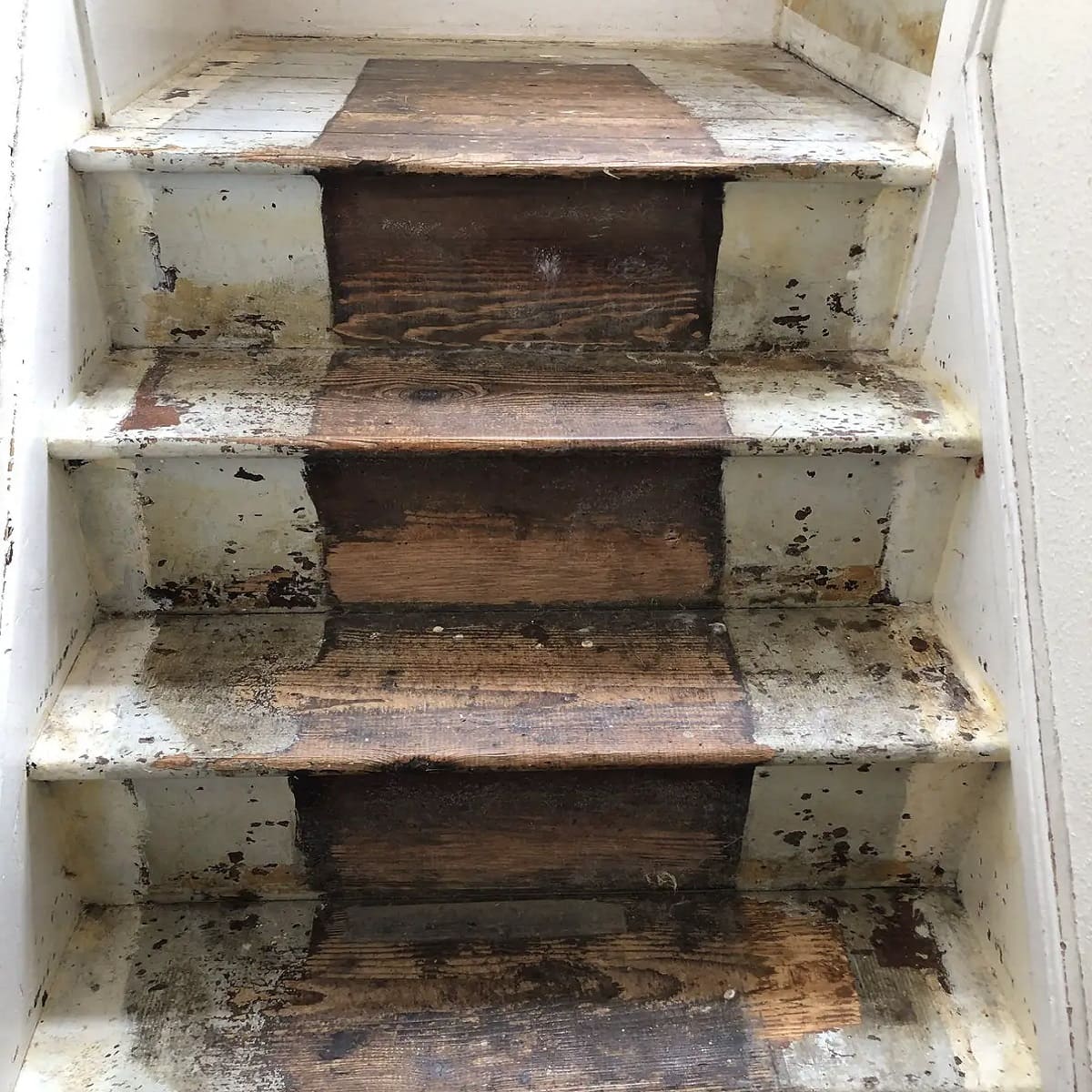

Articles
What Type Of Paint For Stairs
Modified: October 28, 2024
Find out what type of paint is best for painting stairs in this informative articles. Choose the right paint to ensure long-lasting and durable results.
(Many of the links in this article redirect to a specific reviewed product. Your purchase of these products through affiliate links helps to generate commission for Storables.com, at no extra cost. Learn more)
Introduction
When it comes to painting stairs, choosing the right type of paint is crucial. The stairs are an essential part of any home, serving both functional and aesthetic purposes. Whether you are looking to freshen up your stairs with a new coat of paint or giving them a complete makeover, selecting the correct paint will ensure a durable and long-lasting finish.
However, with various types of paint available in the market, it can be overwhelming to decide which one is the best for your stairs. Factors such as durability, finish, ease of application, and maintenance need to be taken into account. In this article, we will explore the different types of paint suitable for stairs and help you make an informed decision.
Factors to Consider
Before delving into the specific types of paint for stairs, there are a few important factors to consider:
- Traffic and Wear: Stairs receive a significant amount of foot traffic, making it crucial to choose a paint that can withstand frequent use and avoid chipping or peeling.
- Finish: Consider the desired finish, whether it’s a glossy, semi-glossy, or matte appearance.
- Cleanability: Stairs can be prone to scuff marks, so selecting a paint that is easy to clean and maintain is essential.
- Drying Time: Depending on your availability and the urgency of the project, the drying time of the paint may be an important factor to consider.
- Compatibility: Ensure that the paint you choose is compatible with the material of your stairs, such as wood, concrete, or metal.
Now let’s explore the different types of paint that are commonly used for stairs:
Key Takeaways:
- Choose the Right Paint for Your Stairs
Consider factors like durability, finish, and cleanability when selecting paint. Latex, oil-based, acrylic, and enamel paints offer various benefits for different stair materials. - Prepare and Transform Your Stairs
Properly prepare the surface and choose the best paint type for wooden, concrete, metal, laminate, vinyl, or tiled stairs. Achieve a stunning, long-lasting finish that enhances your home’s appearance.
Read more: What Type Of Flooring Is Best For Stairs?
Factors to Consider
Before diving into the specific types of paint suitable for stairs, it’s important to consider a few key factors. These factors will help you make an informed decision and choose the right paint for your stairs:
- Traffic and Wear: Stairs are one of the highest traffic areas in any home or building. They endure constant foot traffic, which can lead to wear and tear. When choosing paint for your stairs, consider its durability and ability to withstand frequent use without chipping or peeling. Look for paints specifically designed for high-traffic areas.
- Finish: The finish of the paint will affect the overall appearance of your stairs. Some finishes, such as glossy or semi-glossy, provide a sleek and shiny look, while others, like matte finishes, offer a more understated and subtle appearance. Consider the style and aesthetic of your home when choosing the finish for your stairs.
- Cleanability: Stairs are prone to scuff marks, especially in households with children or pets. Look for paints that are easy to clean and maintain. Paints with a washable or wipeable finish will make it easier to remove any marks or stains that may accumulate over time.
- Drying Time: The drying time of the paint is an important factor to consider, especially if you have limited time or need to use the stairs soon after painting. Some paints dry faster than others, allowing you to complete the project more quickly. Be mindful of the drying time and plan accordingly.
- Compatibility: Stairs can be made from various materials, such as wood, concrete, or metal. Ensure that the paint you choose is compatible with the material of your stairs. Different paints may adhere differently to different surfaces, so it’s essential to choose a paint that is specifically formulated for the material of your stairs.
By considering these factors, you can narrow down your options and choose a paint that meets your specific needs and requirements. Now, let’s explore the different types of paint that are commonly used for stairs.
Latex Paint for Stairs
Latex paint, also known as water-based paint, is a popular choice for painting stairs. It offers several advantages that make it a suitable option for both interior and exterior staircases:
- Durability: Latex paint is known for its durability and ability to withstand heavy foot traffic. It forms a tough and flexible finish that can resist chipping, cracking, and peeling, making it ideal for stairs.
- Easy Application: Latex paint is easy to work with and has a quick drying time, allowing you to apply multiple coats in a shorter period. It also has minimal odor and is non-toxic, making it a safer option, especially if you have pets or children in your home.
- Wide Range of Colors: Latex paint is available in a vast array of colors, allowing you to choose the perfect shade to match your interior or exterior décor. It also offers various finishes, from matte to high-gloss, giving you flexibility in achieving the desired look for your stairs.
- Ease of Maintenance: Stairs painted with latex paint are relatively easy to clean and maintain. They can be wiped clean with a mild detergent and water, making it convenient to remove any dirt or stains that may accumulate over time.
- Environmental Friendliness: Latex paint is considered more eco-friendly compared to oil-based paints. It has lower levels of volatile organic compounds (VOCs), which are harmful chemicals that can be released into the air during and after painting. Opting for low or zero VOC latex paints can contribute to a healthier indoor environment.
When using latex paint for stairs, proper surface preparation is essential for optimal adhesion and longevity. It is recommended to clean the stairs thoroughly, removing any dirt, grease, or old paint. Sanding the surface lightly can help create a better bond between the paint and the stairs.
Overall, latex paint is a versatile and reliable choice for stairs, offering durability, ease of application, an extensive color range, and ease of maintenance. Consider using latex paint for your staircase project, and enjoy a vibrant and long-lasting finish.
Oil-Based Paint for Stairs
Oil-based paint has been a popular choice for painting stairs for many years. It offers unique advantages that make it suitable for specific stair projects:
- Durability: Oil-based paint provides a hard and durable finish, making it highly resistant to wear and tear. It can withstand heavy foot traffic and is less prone to chipping and scratching compared to other types of paint.
- Smooth Finish: Oil-based paint creates a smooth and glossy finish, giving your stairs a sleek and polished appearance. It is often preferred for its ability to provide a professional-looking finish, especially for high-quality wood stairs.
- Stain Resistance: Oil-based paint is known for its excellent stain resistance properties. It can repel various substances like dirt, grease, and liquids, making it easier to clean and maintain over time.
- Ability to Cover Imperfections: Oil-based paint has good hiding capabilities, which means it can effectively cover imperfections on the stair surface. This is particularly beneficial if your stairs have existing stains, marks, or blemishes that you want to conceal.
- Drying Time: One of the downsides of oil-based paint is its longer drying time compared to latex paint. It typically requires more time to dry and cure properly, which can prolong the completion of your stair painting project.
- Odor and VOCs: Oil-based paint has a strong odor due to the presence of solvents. Proper ventilation is necessary when using oil-based paint to minimize the odor. Additionally, oil-based paints usually have higher levels of volatile organic compounds (VOCs), which can be harmful to the environment and human health. It is advisable to use oil-based paint in well-ventilated areas or consider low VOC alternatives.
When using oil-based paint for stairs, it is crucial to prepare the surface properly. Sanding the stairs and applying a primer can help improve the adhesion of the paint and ensure a long-lasting finish.
Keep in mind that oil-based paint requires mineral spirits or paint thinner for cleanup, which can be more challenging and time-consuming compared to water-based paint. Additionally, oil-based paints are not recommended for painting over certain materials, such as latex-painted surfaces, without proper preparation.
Overall, oil-based paint is a preferred choice for those seeking durability, a smooth finish, and excellent stain resistance. It is particularly suitable for high-use areas and wooden stairs. Consider using oil-based paint for your stair project if these characteristics align with your preferences and requirements.
When painting stairs, use a durable, high-traffic paint such as a semi-gloss or satin finish. These finishes are easier to clean and more resistant to scuffs and marks.
Acrylic Paint for Stairs
Acrylic paint is a versatile and popular choice for painting stairs. It offers several advantages that make it suitable for a wide range of stair projects:
- Durability: Acrylic paint provides a durable and long-lasting finish, making it ideal for stairs that endure regular foot traffic. It is resistant to chipping, cracking, and peeling, ensuring that your stairs maintain their beautiful appearance for an extended period.
- Quick Drying Time: One of the notable advantages of acrylic paint is its fast drying time. It dries quickly, allowing you to apply multiple coats or complete the project within a shorter time frame. This can be especially beneficial if you have limited time or need to use the stairs soon after painting.
- Color Retention: Acrylic paint has excellent color retention properties, meaning that the colors stay vibrant and true over time. It is less likely to fade or yellow, even when exposed to sunlight and other environmental factors.
- Versatility: Acrylic paint is available in a wide range of colors and finishes, including matte, satin, and glossy. This allows you to select the perfect paint to match your desired aesthetic and complement your interior décor.
- Easy Clean-Up: Cleaning up after using acrylic paint is relatively easy since it is a water-based paint. Simply use soap and water to clean your brushes and other painting tools. This also means less exposure to harmful chemicals during the painting process.
- Low Odor and VOCs: Acrylic paint has low levels of odor and volatile organic compounds (VOCs). This makes it a more environmentally-friendly option compared to oil-based paints. It also means you can paint your stairs without the need for extensive ventilation.
When using acrylic paint for stairs, proper surface preparation is essential. Clean the stairs thoroughly to remove any dirt, grease, or old paint. If necessary, sand the surface lightly to ensure better adhesion of the paint.
Another advantage of acrylic paint is its ability to adhere well to various types of surfaces, including wood, concrete, and metal. This versatility makes it a suitable option for different stair materials.
In summary, acrylic paint offers durability, fast drying time, color retention, versatility, and ease of clean-up. Consider using acrylic paint for your staircase project, and enjoy a beautiful and long-lasting finish.
Read more: What Type Of Carpet Is Best For Stairs
Enamel Paint for Stairs
Enamel paint is a popular choice for painting stairs due to its exceptional durability and high-gloss finish. Here are some key characteristics and benefits of using enamel paint for your stairs:
- Durability: Enamel paint offers excellent durability, making it resistant to wear, scratches, and stains. It forms a hard, protective coating that can withstand heavy foot traffic and frequent use, ensuring that your stairs stay looking pristine for years to come.
- High-Gloss Finish: One of the standout features of enamel paint is its beautiful, high-gloss finish. It provides a shiny and polished appearance to your stairs, enhancing their visual appeal and adding a touch of elegance to your space.
- Easy to Clean: Enamel paint is known for its smooth and washable surface. It is relatively easy to clean, as dirt, marks, and stains can be wiped away with a damp cloth or sponge. This makes maintenance hassle-free and helps keep your stairs looking fresh and clean.
- Chemical and Moisture Resistance: Due to its hard and durable finish, enamel paint offers resistance to chemicals, moisture, and humidity. This makes it a suitable choice for stairs in areas prone to spills or high humidity, such as kitchens and bathrooms.
- Color Retention: Enamel paint typically has excellent color retention properties, meaning the colors remain vibrant and true over time. It resists fading, yellowing, and other forms of discoloration, allowing your stairs to maintain their original beauty for longer.
- Application Flexibility: Enamel paint can be applied to a variety of surfaces, including wood, metal, and concrete stairs. It adheres well to these materials, providing a smooth and even coverage and ensuring a professional-looking finish.
It’s important to note that enamel paint may have a longer drying time compared to other types of paint. Proper ventilation is recommended during application, as the paint can have a strong odor due to the solvents it contains. Also, keep in mind that enamel paint may require multiple coats to achieve the desired level of glossy finish.
When using enamel paint for stairs, proper surface preparation is crucial. Clean the stairs thoroughly to remove any dirt, grease, or loose paint. Sanding may be necessary to create a smooth surface and ensure better paint adhesion.
In summary, enamel paint offers exceptional durability, a high-gloss finish, easy cleanability, chemical resistance, and color retention. Consider using enamel paint to transform your stairs into a stunning focal point within your home.
Best Type of Paint for Different Types of Stairs
Choosing the best type of paint for your stairs depends on the material they are made of. Here are recommendations for the most common types of stairs:
- Wooden Stairs: For wooden stairs, both latex and oil-based paints are suitable options. Latex paint offers durability, easy application, and a wide range of color choices. Oil-based paint provides a smooth and durable finish, perfect for achieving a high-quality, glossy look. Consider your desired finish and maintenance preferences when choosing between latex and oil-based paint for wooden stairs.
- Concrete Stairs: Latex paint works well on concrete stairs. It provides excellent adhesion to the porous surface of concrete and offers durability against heavy foot traffic. Consider using a masonry primer before applying the latex paint to improve adhesion and longevity.
- Metal Stairs: For metal stairs, an oil-based or enamel paint is generally recommended. Both options offer excellent durability and protection against rust and corrosion. It’s important to properly clean and prepare the metal surface before applying the paint to ensure it adheres well and provides long-lasting results.
- Laminate or Vinyl Stairs: Laminate or vinyl stairs usually have a smooth and glossy surface that requires a paint designed specifically for these materials. Look for a paint labeled as suitable for laminate or vinyl surfaces to ensure optimal adhesion and durability.
- Tiled Stairs: Painting tiled stairs requires careful consideration. It is recommended to use a specialized tile paint or epoxy paint that is designed to adhere to ceramic or porcelain tiles. These paints offer excellent durability and can withstand regular foot traffic without chipping or peeling.
Regardless of the type of stairs you have, it is essential to prepare the surface properly before painting. Clean the stairs thoroughly to remove any dirt, grease, or old paint. If needed, sand the surface lightly to create a better bond between the paint and the stairs.
Consider the specific requirements of your stairs, such as durability, finish, and adhesion, when choosing the best type of paint. It’s also helpful to consult with paint professionals or follow the manufacturer’s recommendations for the specific paint products you intend to use.
Remember to take into account personal preferences and the overall aesthetic of your space when selecting the best type of paint for your stairs. By choosing the right paint, you can enhance the look of your stairs and ensure a long-lasting and beautiful finish.
Conclusion
Painting stairs is a fantastic way to rejuvenate and transform the look of your home. Whether you have wooden, concrete, metal, laminate, vinyl, or tiled stairs, choosing the right type of paint is essential for achieving a durable and aesthetically pleasing finish.
After considering factors like durability, finish, cleanability, drying time, and compatibility with your stair material, several options stand out as excellent choices:
- Latex Paint: Ideal for its durability, ease of application, wide color range, and eco-friendliness, latex paint is a versatile option suitable for most stair types.
- Oil-Based Paint: Known for its durability, high-gloss finish, and stain resistance, oil-based paint is a great choice for wooden stairs or situations where extra protection is required.
- Acrylic Paint: Offering durability, fast drying time, color retention, versatility, and low odor, acrylic paint is a popular option for various stair materials.
- Enamel Paint: Providing exceptional durability, a high-gloss finish, and ease of maintenance, enamel paint is an excellent choice for achieving a polished look on your stairs.
Remember to properly prepare the stairs by cleaning and possibly sanding the surface for optimal paint adhesion. Additionally, consider using a primer, especially for certain materials like metal or challenging surfaces, to ensure better results.
It’s always helpful to consult with paint professionals or follow the manufacturer’s recommendations for the specific paint products you choose. They can provide guidance on the best approach and techniques for painting your stairs based on the specific type of paint you select.
By selecting the best type of paint for your stairs and taking the time to prepare the surface properly, you can achieve a stunning and long-lasting finish that enhances the overall appearance of your home. So go ahead, unleash your creativity, and transform your stairs into a beautiful focal point that elevates your living space.
Frequently Asked Questions about What Type Of Paint For Stairs
Was this page helpful?
At Storables.com, we guarantee accurate and reliable information. Our content, validated by Expert Board Contributors, is crafted following stringent Editorial Policies. We're committed to providing you with well-researched, expert-backed insights for all your informational needs.















0 thoughts on “What Type Of Paint For Stairs”